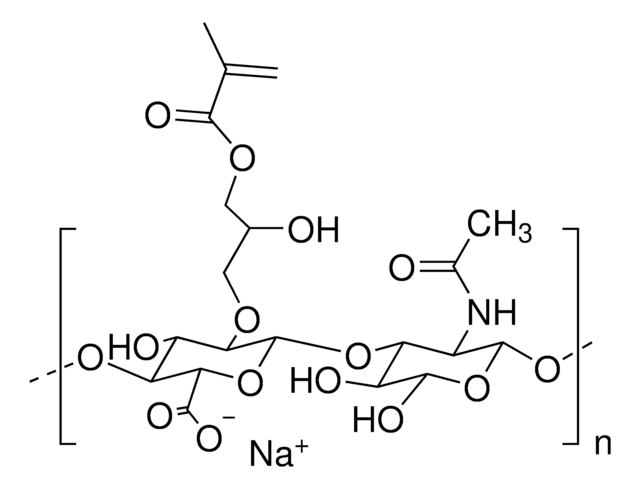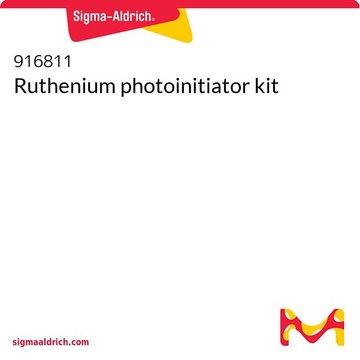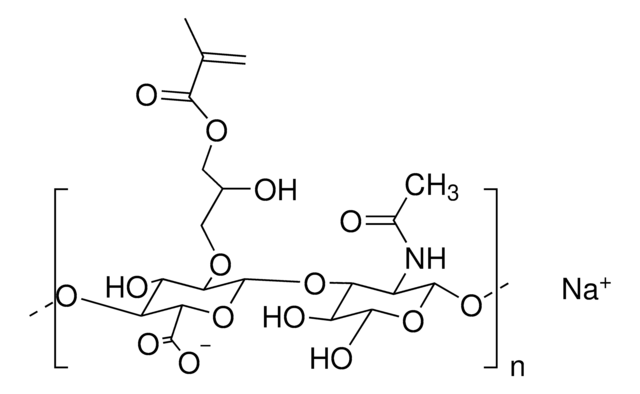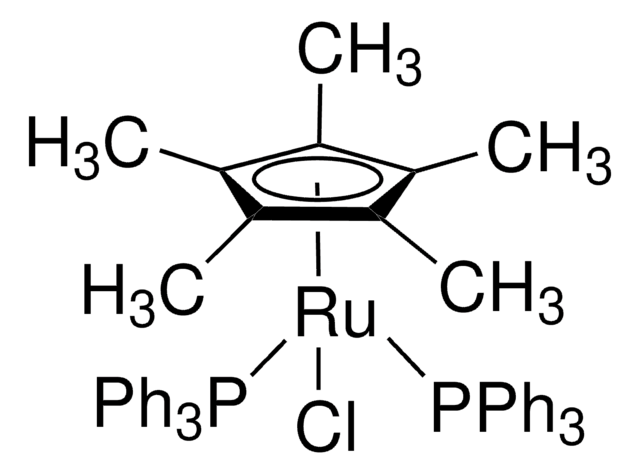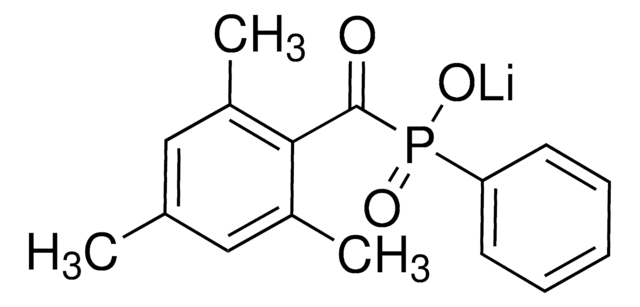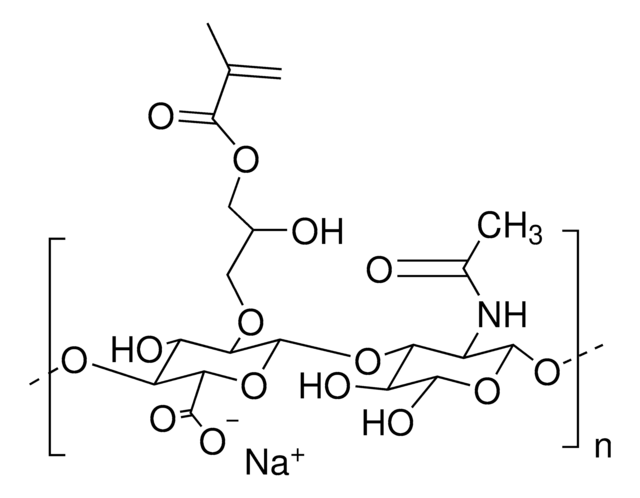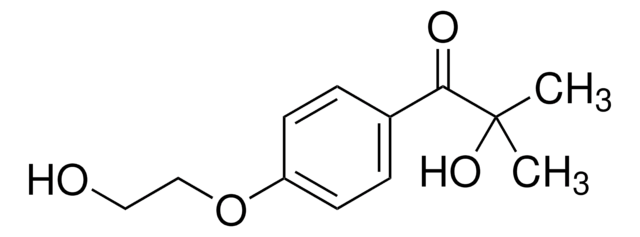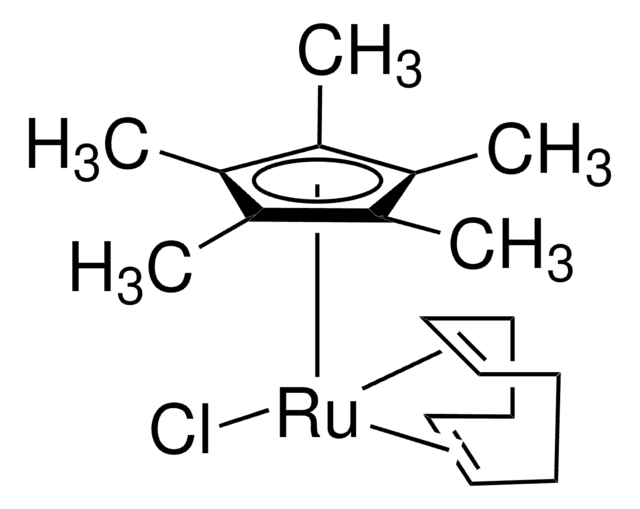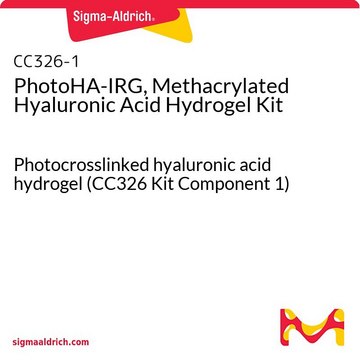917338
PhotoHA™-RUT
methacrylated hyaluronic acid bioink kit, with ruthenium
Sinonimo/i:
3D Bioprinting, Bioink, HAMA, Hyaluronic acid
About This Item
Prodotti consigliati
Descrizione
Methacrylated hyaluronic acid:
Degree of methacrylation: ≥ 45-65%
Product components :
Methacrylated hyaluronic acid (100 mg)
Ruthenium (100 mg)
Sodium persulfate photoinitiator (500 mg)
Livello qualitativo
Sterilità
sterile; sterile-filtered
PM
Mw 100-150 kDa
Temperatura di conservazione
−20°C
Applicazioni
Note legali
Avvertenze
Danger
Indicazioni di pericolo
Consigli di prudenza
Classi di pericolo
Acute Tox. 4 Oral - Ox. Sol. 3 - Resp. Sens. 1 - Skin Irrit. 2 - Skin Sens. 1 - STOT SE 3
Organi bersaglio
Respiratory system
Codice della classe di stoccaggio
5.1B - Oxidizing hazardous materials
Scegli una delle versioni più recenti:
Certificati d'analisi (COA)
It looks like we've run into a problem, but you can still download Certificates of Analysis from our Documenti section.
Se ti serve aiuto, non esitare a contattarci Servizio Clienti
Possiedi già questo prodotto?
I documenti relativi ai prodotti acquistati recentemente sono disponibili nell’Archivio dei documenti.
Il team dei nostri ricercatori vanta grande esperienza in tutte le aree della ricerca quali Life Science, scienza dei materiali, sintesi chimica, cromatografia, discipline analitiche, ecc..
Contatta l'Assistenza Tecnica.
